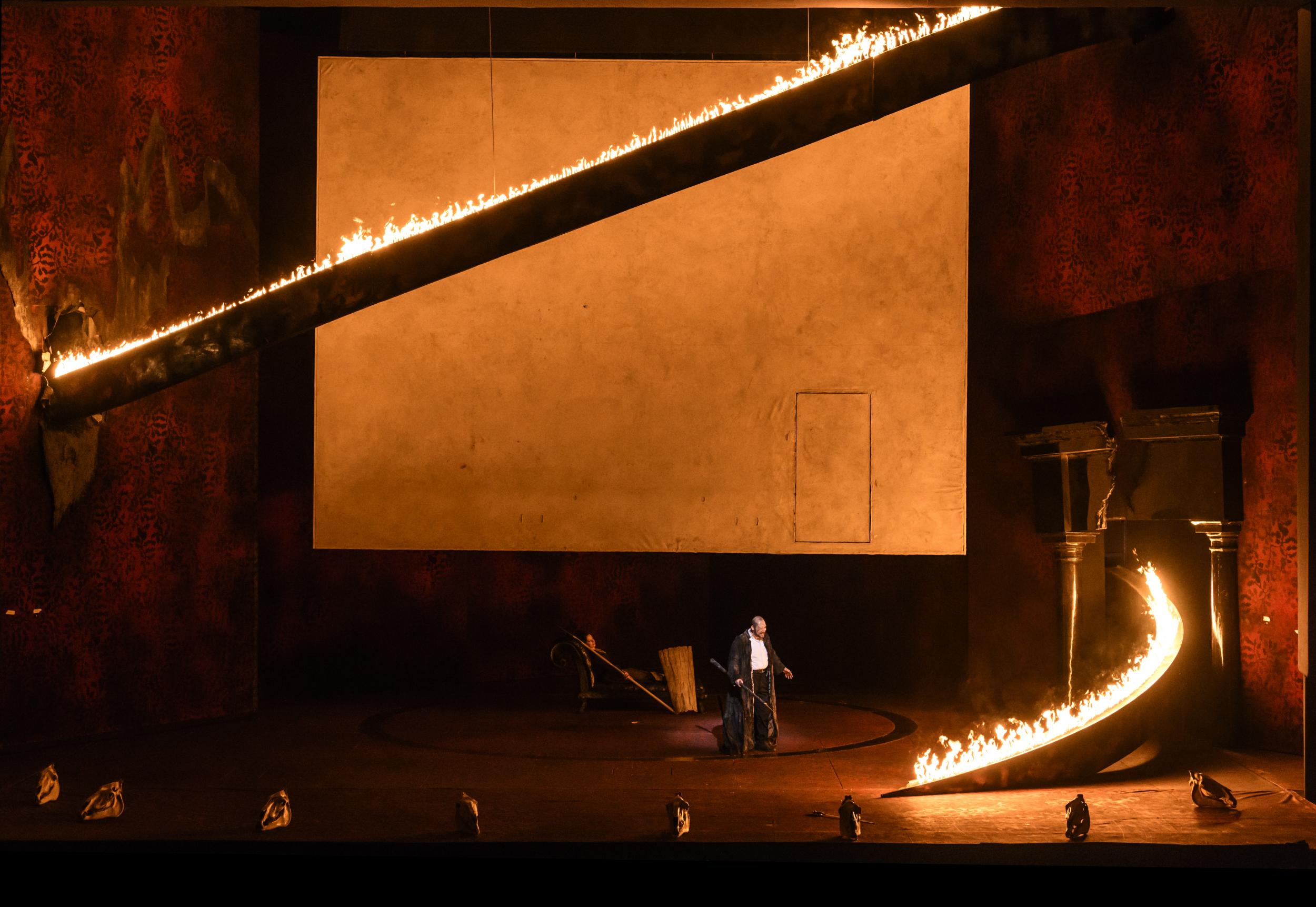Der Ring des Nibelungen: Das Rheingold and Die Walküre at the Royal Opera House, review
Production gaffes mar Die Walküre, including direction that repeatedly contradicts the libretto, and a pathetic gas-mark-2 version of Brünnhilde’s burning mountain

Every few years Covent Garden stakes everything on a complete Ring cycle repeated four times over as many weeks – 16 performances in all. But it’s not much of a gamble, in that within two hours of the seats going on sale it sold out completely. And the show’s not new – this is its third revival.
But that’s Wagnerism for you: ever since Aubrey Beardsley did his famous black-and-white drawing of hushed devotees in 1894, the operatic world has been divided into those who worship at Wagner’s shrine, those who find the whole thing preposterous, and in-betweeners who love the music but fail to appreciate his psychological insights or his homespun cosmogony.
What is it about? The story is often given a Marxist spin, but the eminent Times critic William Mann once neatly expressed the consensus: the Ring was “a dramatic allegory about ethics ... and the ethics are that love is everything, that fear is the beginning of death, and humanity’s struggle for power is rooted in fear”.
Covent Garden’s production is in the hands of director Keith Warner, who believes it concerns the end of one great arc of history – during which man believed the world was governed by gods – and the birth of a god-free age. He’s striven to couch a piece of 19th century Ibsenite realism in the context of archetypal Greek drama. His designer, the late Stefanos Lazaridis, created designs that suggest at once the Industrial Revolution and a place reminiscent of the sanatorium in Thomas Mann’s The Magic Mountain. His visual leitmotiv is a spiral, which translates into everything from a symbolic double-helix, to fans, to the propeller of a crashed plane.
This sounds fine in theory, but in practice it’s problematic. The opening scene works beautifully, with the naked Rhinemaidens cavorting against a backdrop of undulating shapes suggesting gently swirling reflections, while Alberich looks lasciviously on. But the baronial hall in which Wotan and his family hang out is stuffed so full of clashing symbolic elements – ladders, ropes, globes, an antique telescope – that it’s more like a back-street junk shop. There are references to Dr Mengele’s vivisection experiments in Alberich’s subterranean kingdom.
Lazaridis’s imagination in no way answers the demands of this richly suggestive music – the covering of Freia with gold is clumsily done, the giants Fasolt and Fafner come over as a couple of bolshie workmen, and the transformations wrought by the magic Tarnhelm have an am-dram clunkiness; there’s too much prosaic literalism.
Since the preliminary part of the Ring – Das Rheingold – has the narrative simplicity of a cartoon strip, the singers have to work fast to establish their characters, and most of them do. Alan Oke’s fire-god Loge is an incandescent creation, ironical and insinuating, while Lise Davidsen makes a sublimely sung goddess of youth; Johannes Martin Kränzle’s cruelly charismatic Alberich is ably supported by Gerhard Siegel as his rebelliously downtrodden brother Mime.
The climactic intervention by Wiebke Lehmkuhl’s earth-goddess Erda makes the world stand still as it should. John Lundgren’s Wotan has a brilliant timbre, but here he seemed underpowered. Antonio Pappano keeps the thread of the music – two and a half unbroken hours – going majestically. It was a shame that the final Rhinemaiden chorus, which should ring out with bell-like charity, was semi-audible on opening night, but that could easily be sorted.
Production gaffes mar Die Walküre, the next stage of the cycle, including direction that repeatedly contradicts the libretto, and a pathetic gas-mark-2 version of Brünnhilde’s burning mountain, but the spell of this work depends primarily on instruments and voices. The woodwind play ravishingly, and with Stuart Skelton and Ain Anger as Siegmund and Hunding the singing is superb from the start. Sarah Connolly, as Fricka, calls her errant husband Wotan to order with implacable balefulness, and Lundgren finds the power to carry off his dauntingly exposed confessional aria. Nina Stemme, as the greatest living Brünnhilde, induces Lundgren to up his game in the farewell father-and-daughter duet, which sails off sublimely into the empyrean.
Enjoy unlimited access to 70 million ad-free songs and podcasts with Amazon Music
Sign up now for a 30-day free trial
Enjoy unlimited access to 70 million ad-free songs and podcasts with Amazon Music
Sign up now for a 30-day free trial
The timing of these performances may follow Wagnerian tradition, but in London it feels perverse. By starting at 4.30pm they exclude people who work nine to five, and, by allotting almost two hours to intervals, they seem to be pandering to gastronomes who fancy a bit of opera on the side. Those for whom intervals are simply pitstops need to take a good book.
This production of Die Walküre will be broadcast live to cinemas around the world on Sunday 28 October
Subscribe to Independent Premium to bookmark this article
Want to bookmark your favourite articles and stories to read or reference later? Start your Independent Premium subscription today.

Join our commenting forum
Join thought-provoking conversations, follow other Independent readers and see their replies